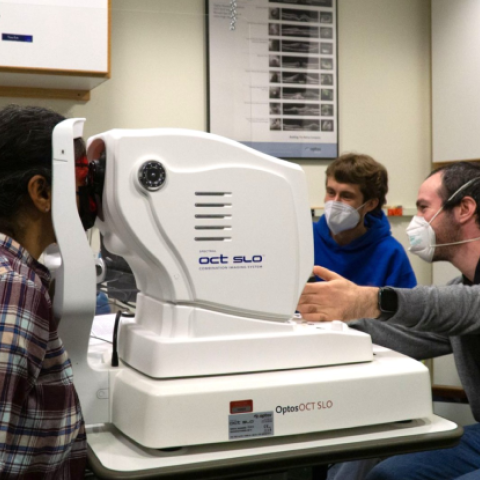
Background
This project, initiated in 2011 by Dr. Miele, applies research from Smith-Kettlewell's Smartpen-Based Audio/Tactile Graphics research project to address unmet wayfinding needs related to public transit: improving orientation by people with visual disabilities in and around unfamiliar transit stations. To address this important need around independent travel, Smith-Kettlewell's Miele Lab assisted the San Francisco LightHouse in obtaining funding for, and development of, an innovative set of audio/tactile station maps for the Bay Area Rapid Transit (BART) system. These maps provided well-designed tactile and high-contrast visual maps of each of 44 BART stations, including layers for platform, concourse, and surrounding streets and station entrances. Maps are annotated in braille, large print, and audio information using the Livescribe smartpen, allowing individual features on each map to be tapped with the pen in order to hear spoken messages such as the name and other information about that feature. These maps allow travelers with visual disabilities to explore and orient themselves to unfamiliar BART stations before leaving home, enabling them to plan routes and strategies before traveling, often in consultation with other blind and sighted travel advisors. The maps are intended to improve travel efficiency and reduce stress and frustration that can result from lack of information and disorientation in unfamiliar transit environments.
Map Features
The maps are produced by the LightHouse, printed and embossed on heavy, 8.5X11 paper, with a full set making up a large 144-page 3-ring binder. Each BART station map includes three views, each on its own page, with some larger stations requiring 2 pages for each view. The views include:
- Street -- The map of the neighborhood around the BART station includes streets, station entrances (escalators, stairways, elevators, etc.), bus stops, passenger loading zones, taxi stands, parking lots, and plazas.
- Concourse -- The map of the concourse level of the BART station includes an agent booth, ticket machines, fare gates, boundaries between paid and unpaid areas of the station, stairs, escalators, elevators, bathrooms, and other features.
- Platform -- The map of the platform level of each BART station includes stairs, escalators, elevators, benches, train door locations, and tracks.
All features on the maps have distinct tactile and visual symbols, developed in a user-centered iterative process with project partners and transit stakeholders, including transit riders with visual disabilities, orientation, and mobility professionals, teachers of the visually impaired, and outside tactile graphics experts. When features are tapped with the smartpen, the name and additional information about that feature are spoken aloud by the speaker in the pen. For example, when a bus stop is tapped, the pen will announce "Bus stop." It also tells the user where the bus stop is located relative to the street and what bus lines use that particular stop.
More Information
BART Station Maps for blind low vision individuals are currently being produced by the San Francisco LightHouse, and can be ordered along with the accompanying smartpen from Adaptations, the LightHouse store. In 2016, the Bay Area Metropolitan Transportation Commission honored Smith-Kettlewell and the LightHouse with an Access In Motion Award recognizing this ground-breaking approach to providing orientation information for blind and visually impaired transit riders. The LightHouse is currently collaborating with a number of other transit agencies in the US and Canada to replicate this powerful resource.

